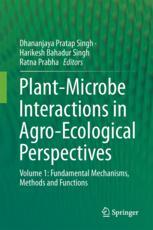

Most ebook files are in PDF format, so you can easily read them using various software such as Foxit Reader or directly on the Google Chrome browser.
Some ebook files are released by publishers in other formats such as .awz, .mobi, .epub, .fb2, etc. You may need to install specific software to read these formats on mobile/PC, such as Calibre.
Please read the tutorial at this link: https://ebookbell.com/faq
We offer FREE conversion to the popular formats you request; however, this may take some time. Therefore, right after payment, please email us, and we will try to provide the service as quickly as possible.
For some exceptional file formats or broken links (if any), please refrain from opening any disputes. Instead, email us first, and we will try to assist within a maximum of 6 hours.
EbookBell Team

4.0
76 reviewsThis books presents an updated compilation on fundamental interaction mechanisms of microbial communities with the plant roots and rhizosphere (belowground) and leaves and aerial parts (aboveground). Plant rhizopshere recruits its own microbial composition that survive there and help plants grow and develop better under biotic and abiotic conditions. Similar is the case with the beneficial microorganisms which are applied as inoculants with characteristic functions. The mechanism of plant-microbe interactions is interesting phenomenon in biological perspectives with numerous implications in the fields. The First volume focuses on the basic and fundamental mechanisms that have been worked out by the scientific communities taking into account different plant-microbe systems. This includes methods that decipher mechanisms at cellular, physiological, biochemical and molecular levels and the functions that are the final outcome of any beneficial or non-beneficial interactions in crop plants and microbes. Recent advances in this research area is covered in different book chapters that reflect the impact of microbial interactions on soil and plant health, dynamics of rhizosphere microbial communities, interaction mechanisms of microbes with multiple functional attributes, microbiome of contrasting crop production systems (organic vs conventional), mechanisms behind symbiotic and pathogenic interactions, endophytic (bacterial and fungal) interaction and benefits, rhizoplane and endosphere associations, signalling cascades and determinants in rhizosphere, quorum sensing in bacteria and impact on interaction, mycorrhizal interaction mechanisms, induced disease resistance and plant immunization, interaction mechanisms that suppress disease and belowground microbial crosstalk with plant rhizosphere. Methods based on multiphasic and multi-omics approaches were discussed in detail by the authors. Content-wise, the book offers an advanced account on various aspects of plant-microbe interactions and valuable implications in agro-ecological perspectives.